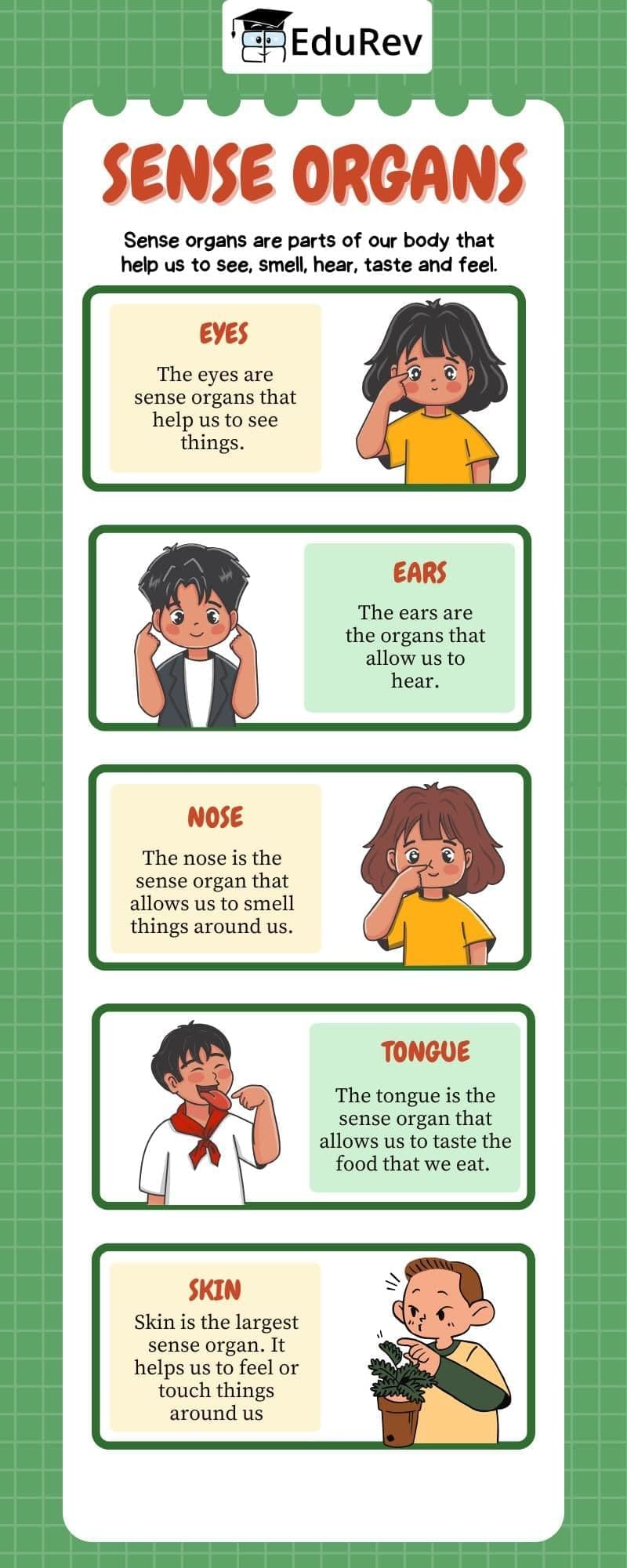Class 1 Exam > Class 1 Notes > EVS for Class 1 > Infographics: Sense Organs
Infographics: Sense Organs | EVS for Class 1 PDF Download

The document Infographics: Sense Organs | EVS for Class 1 is a part of the Class 1 Course EVS for Class 1.
All you need of Class 1 at this link: Class 1
|
33 videos|215 docs|44 tests
|
FAQs on Infographics: Sense Organs - EVS for Class 1
| $1. What are the main sense organs in the human body? |  |
Ans. The main sense organs in the human body are the eyes (sight), ears (hearing), nose (smell), tongue (taste), and skin (touch). Each organ is responsible for receiving specific stimuli from the environment and transmitting that information to the brain for processing.
| $2. How do the sense organs work together to help us perceive our environment? |  |
Ans. Sense organs work in coordination to provide a comprehensive understanding of our surroundings. For example, sight and sound can help us recognize a person approaching, while smell can enhance our perception of food. The brain integrates information from all five senses to create a cohesive experience of the environment.
| $3. Why is it important to take care of our sense organs? |  |
Ans. Taking care of our sense organs is crucial because they play a vital role in our daily lives and overall well-being. Damage to these organs can lead to impairments in perception, communication, and safety. Regular check-ups and protecting our senses from harmful substances or environments can help maintain their function.
| $4. What are some common disorders associated with sense organs? |  |
Ans. Common disorders include myopia (nearsightedness) and hyperopia (farsightedness) for the eyes, tinnitus (ringing in the ears) for hearing, anosmia (loss of smell) for the nose, and dysgeusia (altered taste) for the tongue. Each condition can significantly impact daily activities and quality of life.
| $5. Can our sense organs adapt over time? |  |
Ans. Yes, sense organs can adapt over time through a process called sensory adaptation. This occurs when the sensitivity of the senses decreases with continuous exposure to a stimulus, allowing us to focus on changes in the environment rather than constant background stimuli. However, some adaptations can also lead to challenges, such as reduced sensitivity or awareness.
Related Searches





















